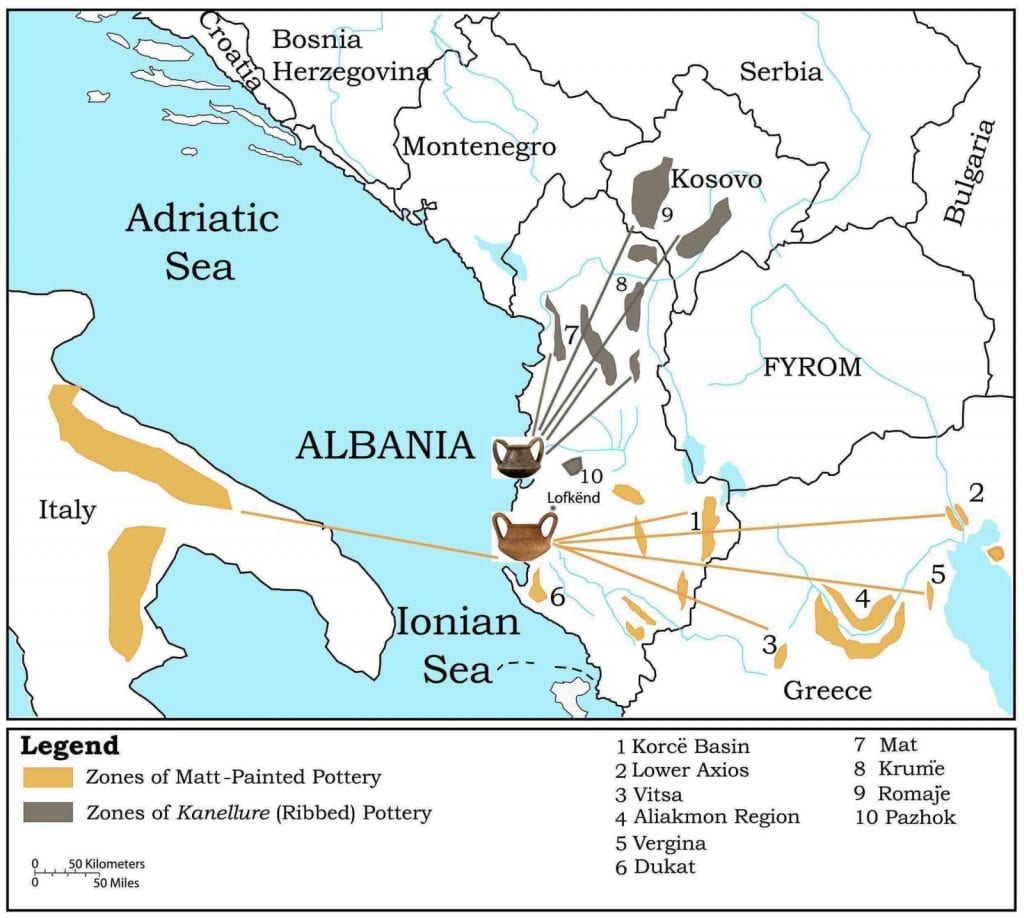Albanian is not a pure Illyrian language
Albanian is not a pure Thracian language
Bryges were in Albania circa 1200BC, some Dardani crossed from Balkans to Anatolia around this time too, WITH some of the Bryges. Some stayed behind in the Balkans. Bryges, Dardani, Paeoni, seem to all be heavily interlinked in history & their geography, in both the Balkans and Anatolia. Lots of overlap with these ancient tribes. It's likely these people were rich in E-V13. I think around this time, Illyrians had started settling Albania, and other nearby areas, or possibly earlier (rumored MBA J2b2 Albania sample)
No doubt J2b2 and E-V13 lived among each other and mixed since the LBA. By The Iron Age, Illyrians gave even more influence, to the Dardani, Paeoni, etc. The Illyrians allied with these people numerous times in history too, their stretch of influence was up to the Morava Vardar, where they met Thracians that lived among these rivers
It's also interesting that after Bryges disappear from Albania, the Albanoi are mentioned in their place several hundreds of years later. This makes me wonder, if Albanoi / Arber was formed from Bryges + Illyrians (Arbi?)
Either way, I think there's no doubt that Albanian is Thraco-Illyrian, with more Illyrian influence than Thracian. I don't think it's possible to tie it down to only one of these languages, given the lack of written material from ancient Illyrians and Thracians. We know Albanian is linked to Messapic, who came from Illyria, who were J2b2. To ignore this, is a wishful, pure Thracoid fantasy.. In that same token, to ignore that E-V13 is the most common haplogroup among Albanians today, is a wishful, pure Illyrian fantasy too. Clearly we have links to both, I think this shouldn't be ignored. Everyone wants to be "pure" and assign themselves to one tribe or race, this type of thinking is a lot like the outdated "Aryan-Nordic-Nazi" theories that was popular in Germany / Northern Europe like 100 years ago. All we talk about here is, "J2b2 isn't Albanian" "E-V13 isn't Albanian" "Illyrians were weak, look how low J2b2 is." "Thracians were weak, look how assimilated E-V13 is"

Ridiculous. We are not pure Illyrians and we are not pure Thracians... All the fantasy fiction writers on here need to realize this




